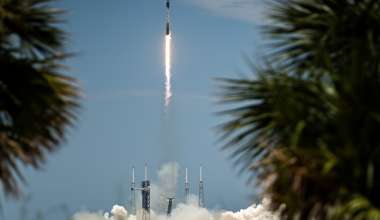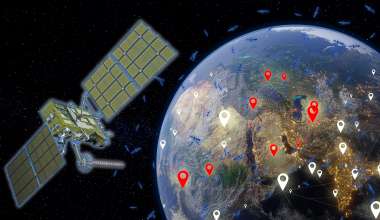The scheduled Tuesday flight from Cape Canaveral will be SpaceX’s first launch of an Air Force National Security Space (NSS) mission, which involved significant participation from The Aerospace Corporation. The GPS III space vehicle is the first in the next-generation series of GPS satellites, a project with which Aerospace was also closely involved.
Aerospace worked extensively with the Air Force and SpaceX over a year to develop a comprehensive Cooperative Research and Development Agreement, which contained the certification plan for the Falcon 9 launch system. Over the next many months, the team looked at qualification and acceptance for systems including propulsion, avionics, structures, ground systems, and safety systems. The Air Force and Aerospace also monitored more than 60 SpaceX launches.
In May 2015, SpaceX was certified for EELV launches. The certified baseline was later updated to the Falcon 9 Upgrade in January 2016. The certification allowed SpaceX to compete for NSS missions, setting the stage for the introduction of a new launch system for the first time in 20 years and the first competitive launch award in more than a decade, when SpaceX won a contract in April 2016 from the Air Force to launch the next-generation GPS satellite aboard its Falcon 9 rocket.
“This is a huge milestone in Aerospace’s support to our Air Force customer,” said Akhil Gujral, general manager of Launch Systems Division. “I am extremely proud of our team’s agile and innovative efforts while maintaining the right focus on mission success, and I look forward to a successful launch.”
Signature Satellite Program
GPS could rightfully be called Aerospace’s signature satellite program. The company played an integral role in development of GPS starting back in the 1960s, providing proof-of-concept studies; constellation design and management studies; accuracy improvement initiatives; independent assessments; and operational assessments. The first Aerospace president, Ivan Getting, is often credited with being an inventor of GPS. Two Aerospace employees, Hideyoshi Nakamura and Dr. James Woodford, wrote the first report outlining the proposed system architecture for GPS in 1966.
What drives GPS is its extremely accurate timekeeping, which is used for everyday activities such as banking, mobile phone operations, credit card payment networks, and control of power grids. The GPS satellites transmit one-way signals that give the satellite’s position and the time, generated by multiple atomic clocks onboard. GPS receivers on the ground use these signals to effectively synchronize with the atomic clocks and calculate positions on Earth.
The GPS III series — manufactured by Lockheed Martin — boasts numerous upgrades over previous GPS models in areas including anti-jamming capabilities; more military and civilian signals that are more accurate and powerful; specialized signals, such as for aviation services; and a signal that can be used with other satellite navigation systems such as the European Union’s Galileo system.
Although several other countries operate or are building navigation satellite systems, the world’s gold standard continues to be the U.S. Air Force’s GPS, and Aerospace continues to provide the engineering and scientific expertise and guidance to keep improving the system that so much of the world now depends on every day.





